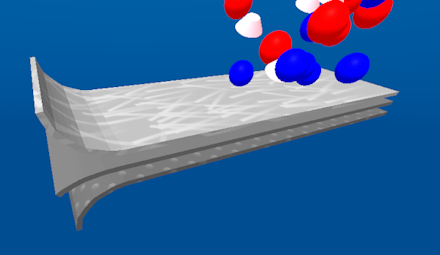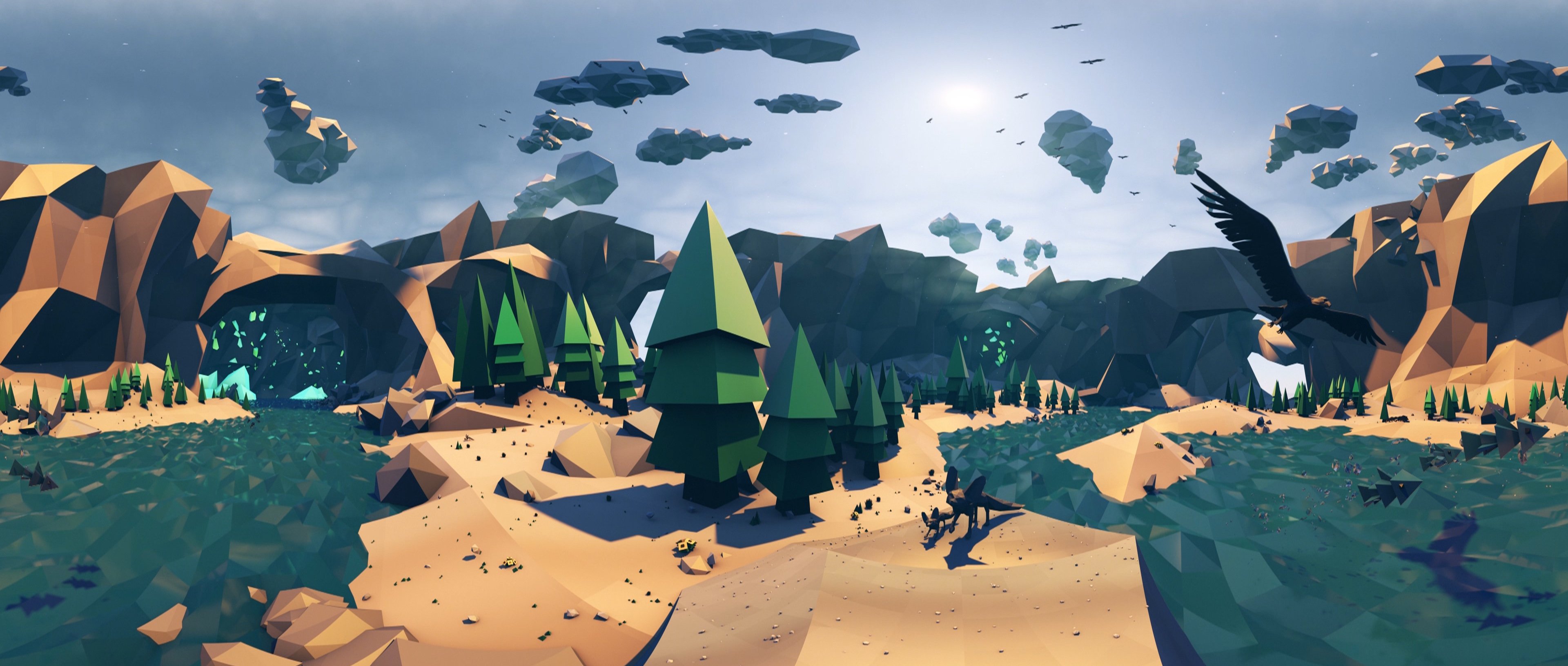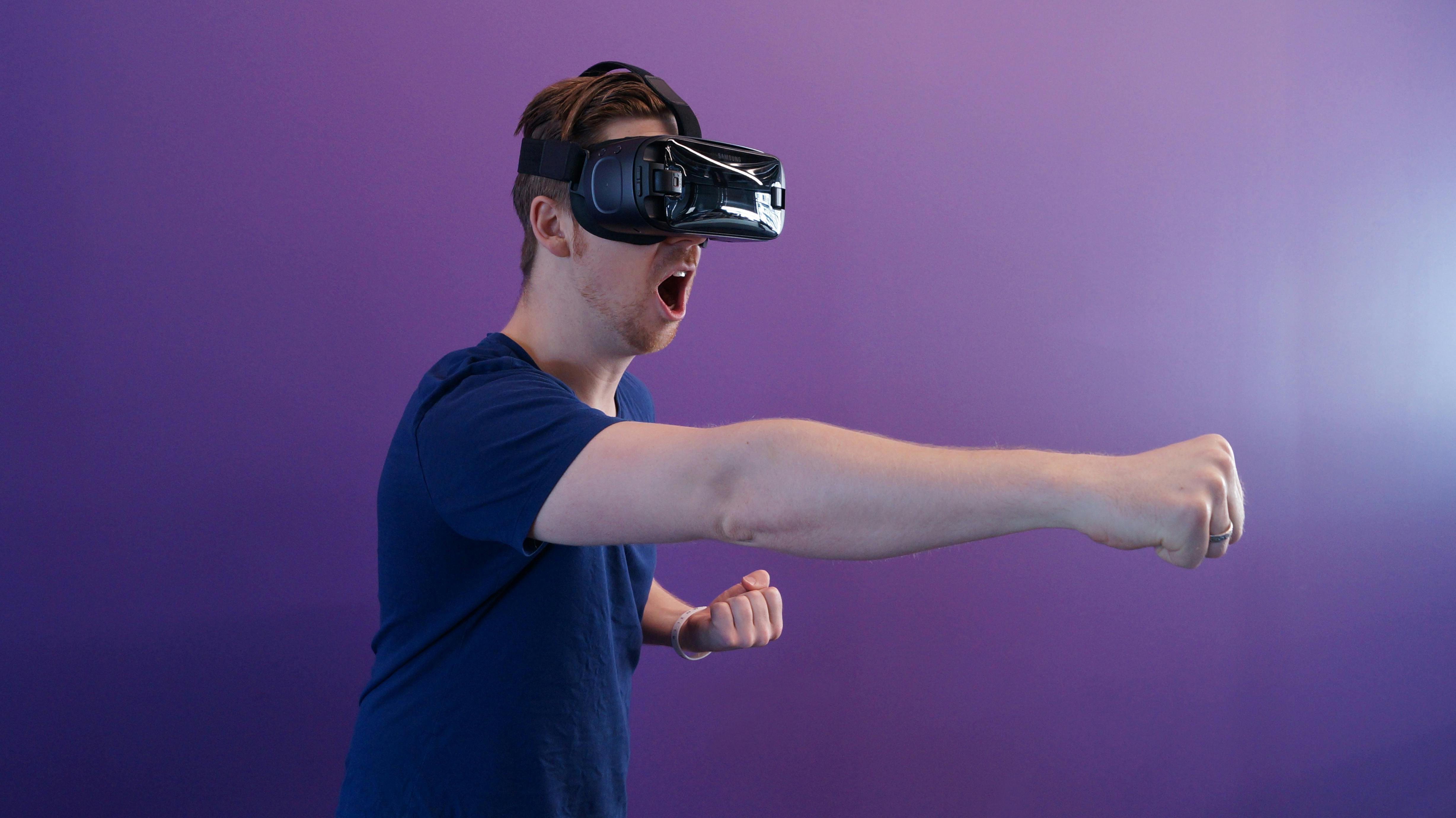A couple of years ago I started up Virtual Reality Working Out Loud Week to promote real-world applications of virtual reality.
The inaugural #VRwolweek unearthed 20 real-world examples of the emerging technology, and the enduring popularity of that blog post tells me that we are hungry for more.
Loath to disappoint, I hereby present 25 more real-world examples of virtual reality, drawn from this year’s and last year’s events. I thank everyone who contributed to the following list.

- Kicking off with the Colonel, it would be remiss of me to omit KFC’s virtual escape room The Hard Way. Widely criticised for its evil genius paradigm, I urge us to appreciate the game’s otherwise authenticity. If used as a primer for training in real life, then it’s an engaging example of setting up an employee for success.
- Anchor Construction uses virtual reality to train its construction workers, while UPS uses it to train its truck drivers.
- South Wales Fire and Rescue uses interactive 360° video to train its new recruits on extricating a casualty from a road traffic incident.
- The Dutch Fire Department uses 360° video to teach the public how to react in case of an emergency, while on the other side of the flames in Australia FLAIM Trainer combines VR with haptics and heat-generating clothing to immerse firefighters in realistic situations.
- In Africa, Meet the Soldier aims to increase empathy among warring cattle farmers, while Cisco and Dimension Data are helping save the rhino.
- This charming Kiwi uses 360° video to record pov tutorials for mobile productivity apps. “See the apps and devices in action, in the context of where we work, live and play.”
- A group of middle school students has used 360° photos to create a virtual tour of Fort Vancouver, while the Chatham Historic Dockyard Trust uses 360° video to take you on a tour of their Age of Sail galleries.
- This Australian agency creates virtual tours and visualisations for the mining, architecture and tourism industries.
- Have you ever wondered how a self-driving car senses the world around it? Wonder no more with the Waymo 360° experience.
- Emmy Award winner for Outstanding Innovation in Interactive Storytelling, Pearl is a beautiful 360° animation that heralds the future of narrative.
- Virtual reality isn’t new to gamers, but now it’s social. Check out Evasion and Poker VR.
- I’m continually amazed at what can be achieved with CoSpaces Edu, such as the Virtual Reality Learning Lab’s uber cool reboot of Frogger. And while we’re going retro, have a laugh at Mario in real life.
- Topshop allows their customers to ride a virtual waterslide over the black cabs and double-deckers of central London.
- SeaWorld hybridises the real world with the virtual. Patrons of The Kraken Unleashed ride a rollercoaster while wearing VR headsets that plunge them into the abyss.It reminds me of Batman Adventure at Australia’s Movie World back in 1992, when we all sat on moveable seats in front of a big screen simulating the batplane screaming through Gotham City.A rollercoaster ramps the immersion up a few notches, to say the least, and I can see why it’s the perfect vehicle for a pre-recorded experience because the timing is precise.
- In Norway, Audi lets you test-drive their new Q5 in a giant virtual sandbox. It took me a while to work out the prospective customer would dig the racetrack in a real sandbox, which was then scanned and transformed into virtual reality. It’s a modern-day twist on Daytona USA presumably intended to attract the Amazon generation in-store to be worked over by the sales reps.Incidentally, I see the clever Scandi’s have now moved on to Augmented Reality with the Quattro Coaster app, which lets you build a road and drive a mini car on it in your living room.
- VR needn’t have an Audi-sized budget to be effective for marketing. A product manager in the medical industry created a WebVR experience to promote the hi-tech material in her range of surgical gowns. Given her name you may deduce I know this person, so I can tell you this impressive project was done on a shoestring.
- Finally, these other examples of virtual reality in healthcare – for autism, disability and pain management – must surely turn the most ardent of sceptics.

Oh how far we’ve come since Hugo Gernsback strapped on his teleyeglasses back in 1968. Long may this wonderful technology continue to evolve!



